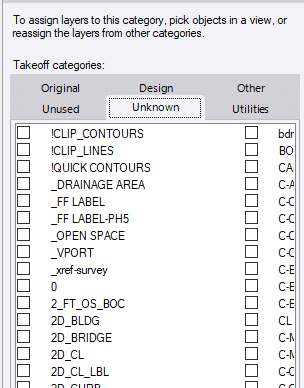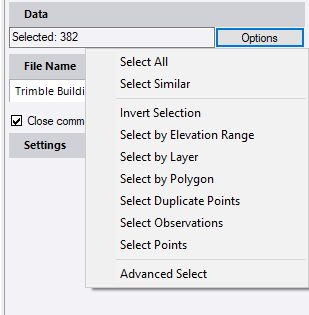

TBC Does That: Meet ALTA Survey Standards

TBC Does That: Extract Poles and Signs from Point CloudsĮxtract street poles and signs from point clouds with partially automatic identification. Use machine learning to identify similar objects in a point cloud by recognizing the assigned feature attributes. TBC Does That: Extract Trees from Point Clouds TBC Does That: Extract Ground Surface from Point CloudsĪutomatically extract ground points from a point cloud to create a new classification group for surface data. TBC offers great interoperability with Autodesk Civil3D and offers comprehensive QA/QC tools and CAD functions to clean, process and analyze field data. TBC Does That: TBC and Autodesk Civil3D - Better Together In TBC, the Best-fit Line command automates the process of drafting catenary power lines in point cloud data. The power industry must analyze the shape of catenary lines to ensure clearances are adequate regardless of the weather. TBC Does That: Draft Catenary Lines with Best-Fit Line Command Generating cut/fill maps for projected surface allows you to perform change detection over time on structures such as a dam or a building wall. TBC helps you create projected surfaces along a vertical wall and perform earthwork analysis to detect and monitor the quantitative movement of the wall. TBC Does That: Projected Surfaces and Cut/Fill Maps TBC connects the directories and syncs the data in the schema that you originally chose in ArcGIS. The feature schema you created in ArcGIS is used during field data collection in Trimble Access and throughout project completion in TBC. With some upfront work, you can avoid exporting and reformatting when moving data between ArcGIS and Trimble Business Center (TBC). TBC Does That: Sync GIS Data with ArcGIS Geodatabase For any field data, you can access the complete metadata, including instrument type and height, time and date collected, GNSS satellite condition, total station setup type, and more. Original field observations are always retained in TBC, even after data are processed, filtered, cleaned, and incorporated into final deliverables. TBC Does That: Review Original Field Observations TBC Does That: Convert Point Clouds to Orthophotosĭo you find it helpful to have orthophotos showing your job site before, during and after construction? The SX10 scanning total station collects point clouds and images to archives information when surveying a job site however, if there is an area not covered by an image, or if you’re using a different scanner that doesn’t collect images, you can use TBC to create an orthophoto by converting the point cloud into an image. When doing field work, it can be very helpful to use a georeferenced image as a basemap to better understand the lay of the land and to visually inspect points to ensure they closely match the paper plan or aerial/satellite imagery. TBC Does That: Georeference Images to Create Basemap In case you prefer to work in TBC with ground coordinates, TBC can convert grid to ground with the click of a button. Surveyors measure land surfaces using a ground coordinate system, and TBC displays survey data in grid coordinates. TBC Does That: Convert Coordinates from Grid to Ground
#Trimble business center field to finish verification
TBC also has built-in background maps and DigitalGlobe imagery to provide a convenient verification of project location. TBC includes Google Earth tools that allow you to overlay your survey data on a current Google Earth basemap to create a user-friendly visualization for a project. TBC Does That: View Survey Data on Basemap We invite you to browse through the quick links below to commonly used functionality:
#Trimble business center field to finish full
Trimble Business Center's field-to-finish survey CAD software helps surveyors deliver high-accuracy GNSS data, create CAD deliverables, and leverage full data traceability throughout a project's lifecycle.


 0 kommentar(er)
0 kommentar(er)
